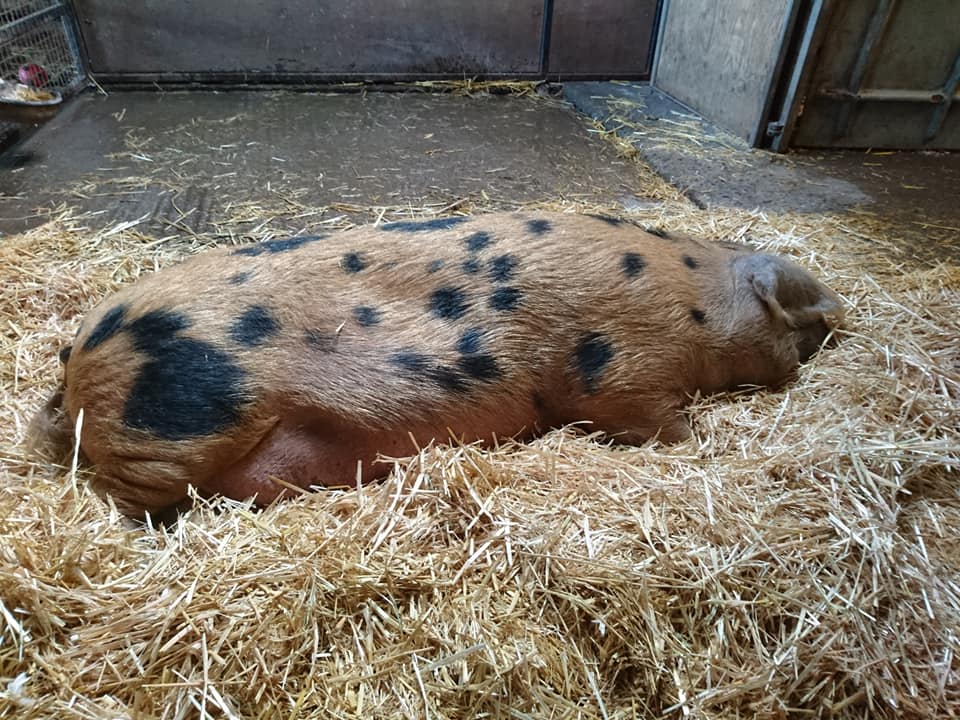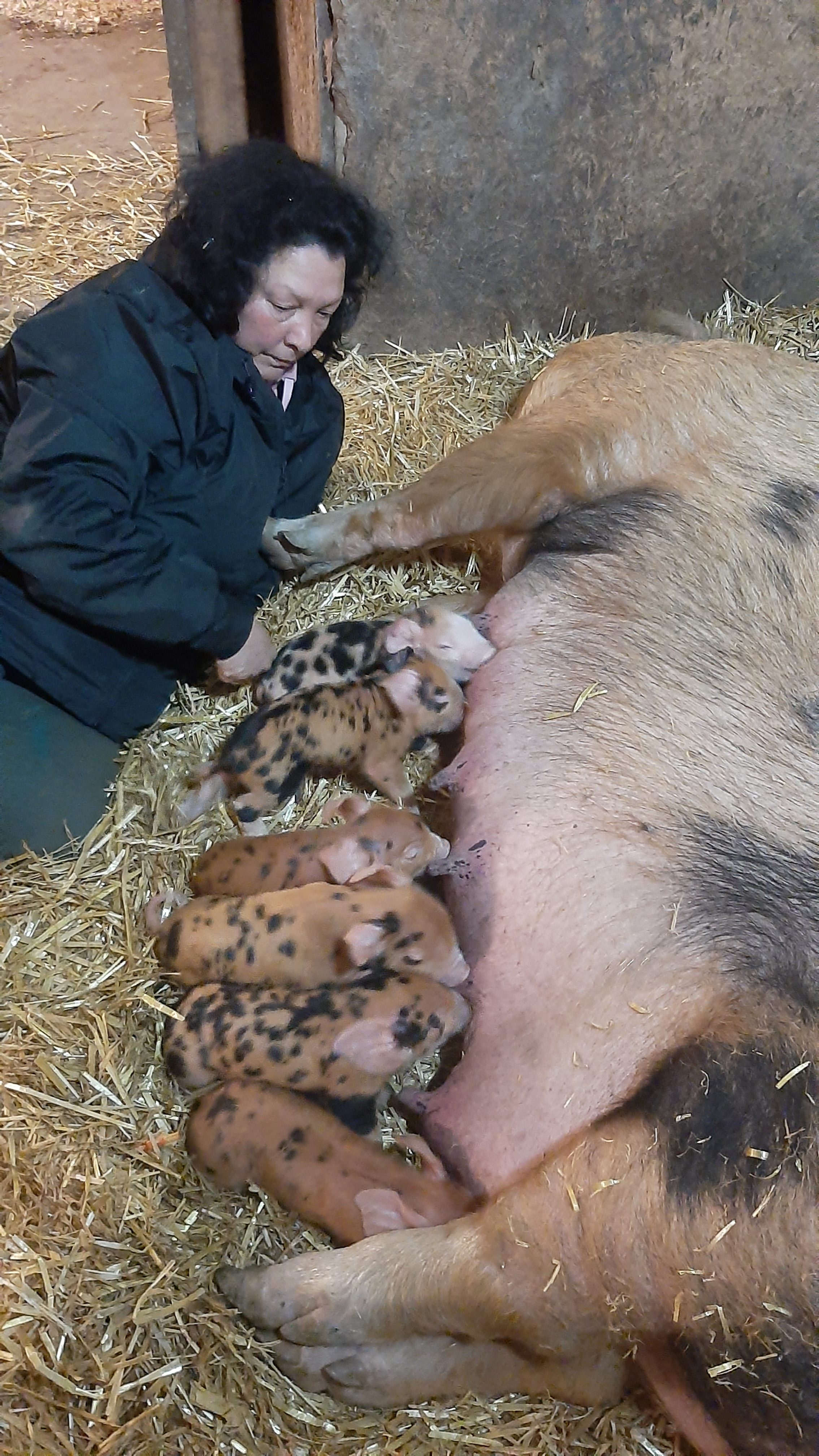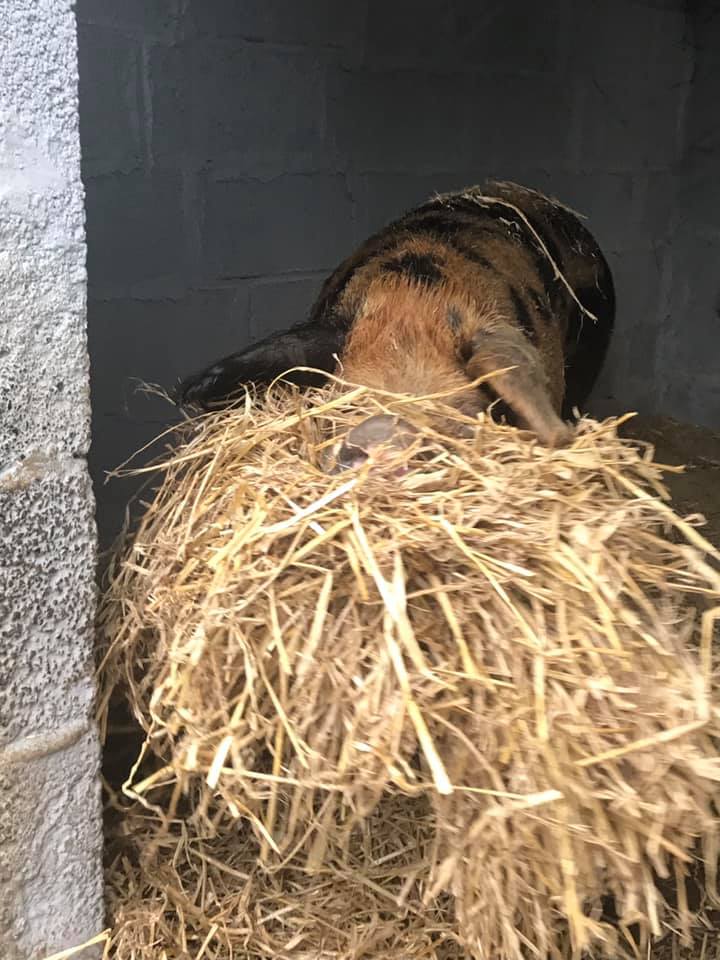
It’s hard to imagine that we were all worried about keeping our boys and girls cool and creating appropriate shade and then during farrowing we all worried about our poor girls keeping cool with fans and wetting floors.
As the seasons change different challenges emerge, which makes us ask ourselves how we cope. Especially now the wind, rain and dark evenings are upon us. However, around the corner our hearts will be surrounded with warmth as we enter the season of new life and farrowings.
Straw and Farrowing

Up to and during farrowing it is so easy to give our girls copious amounts of straw for nesting. It is one of the forms of enrichment enabling them to behave naturally, straw also acts as good form of thermal insulation BUT please remember not to give your girls too much straw during farrowing as this can and does lead to piglets getting lost in the straw, sometimes being suffocated and the sow accidentally standing on them as she is unable to see them. Yes she has an incredible nose but during farrowing there are many scents for her sensors to pick up at this busy time. Furthermore, whilst the sow is farrowing and there are two or three already suckling she may from time to time use, what i call the “pawing action” with her front leg. This action will bring straw over the suckling piglets and prevent the other piglets from finding a teat and then burying these piglets in straw. Don’t be afraid to take out some straw should you feel that there is too much. Then after all the piglets are born and she has passed out her afterbirth then tidy her up and add a little fresh straw which will be greatly appreciated.
Varieties of Bedding
As we know there are many options of bedding available to us with the different varieties of straw as well as alternative bedding. Most importantly, whichever bedding we choose and use must be comfortable to lie on, absorbent, dust free, bacteria and mycotoxin free. A good tester is, if it is comfy for you then it is comfy for them!
So what’s out there?:
Most popular is wheat and barley straw. Oat straw is no stranger to us but alternatives to consider is bean straw.
Barley straw – is most popular as it is soft and harbours very little dust. With regards to be absorbent it is rated as very low compared to other straw as it is about 33% less absorbent than say oat straw
Wheat straw – is the pig farmers number one’s choice. It is crunchy with thicker stalks with regards to absorbency it is 24% less than oat straw and pigs tend not to eat it.
Oat straw – is softer than wheat straw and is very absorbent than all the above mentioned straws AND is 10% more absorbent than sawdust. Yes a little more expensive as it is also used as a feed and very delicious it is too. A little minus is that it is a very light and when using it in the arks does blow all over the place.
Rye straw – not a stranger to bedding but is prone to ergot so it is wise to check that it is ergot free. Rye straw that is contaminated with ergot can cause reproductive issues in pregnant sows.
Triticale straw – Now this straw is about 25% less absorbent than oat straw and is not dissimilar to wheat straw. With regards to productivity and compared to wheat or barley triticale produces 30% larger volume of straw, which has proven to be of interest to farmers.
REMEMBER:
Any straw used for bedding, must be clean, dust free and free of mould
Straw Alternatives
There are alternatives. What’s about?

Using a base layer of – rape, pea or bean straw for base layers including sow arks.
OR Woodchips and shavings – Home-grown wood or some types of recycled wood that can be chipped on your holding or farm are likely to be the most cost-effective options. A benefit of wood chippings is that they have limited bacterial growth and less dust than straw. However, can cause respiratory problems to pigs/piglets and is unsuitable for a farrowing material. Good for use as a toilet area.

Shredded paper – Shredded paper is dust-free, low cost and very absorbent, making it an excellent bedding material, especially in the farrowing house.
Miscanthus (Elephant grass) – Miscanthus is a perennial grass, usually grown as a biomass crop. It can absorb up to three times its own weight in moisture and also composts down quickly. It is, however, a high-yielding energy crop so getting hold of it for bedding could prove difficult.

Looking after your bedding
- Ensure drainage is good
- Keep a close eye on drinkers and feeders to avoid unnecessary spillage leading to spoiling
- Consider the positioning of arcs; try to avoid wet holes
- Store straw so that it is as protected from the elements as possible; this will reduce the number of wasted bales as well as reducing the risk of mycotoxin contamination and the associated deterioration and the affect it will have on your herd.
